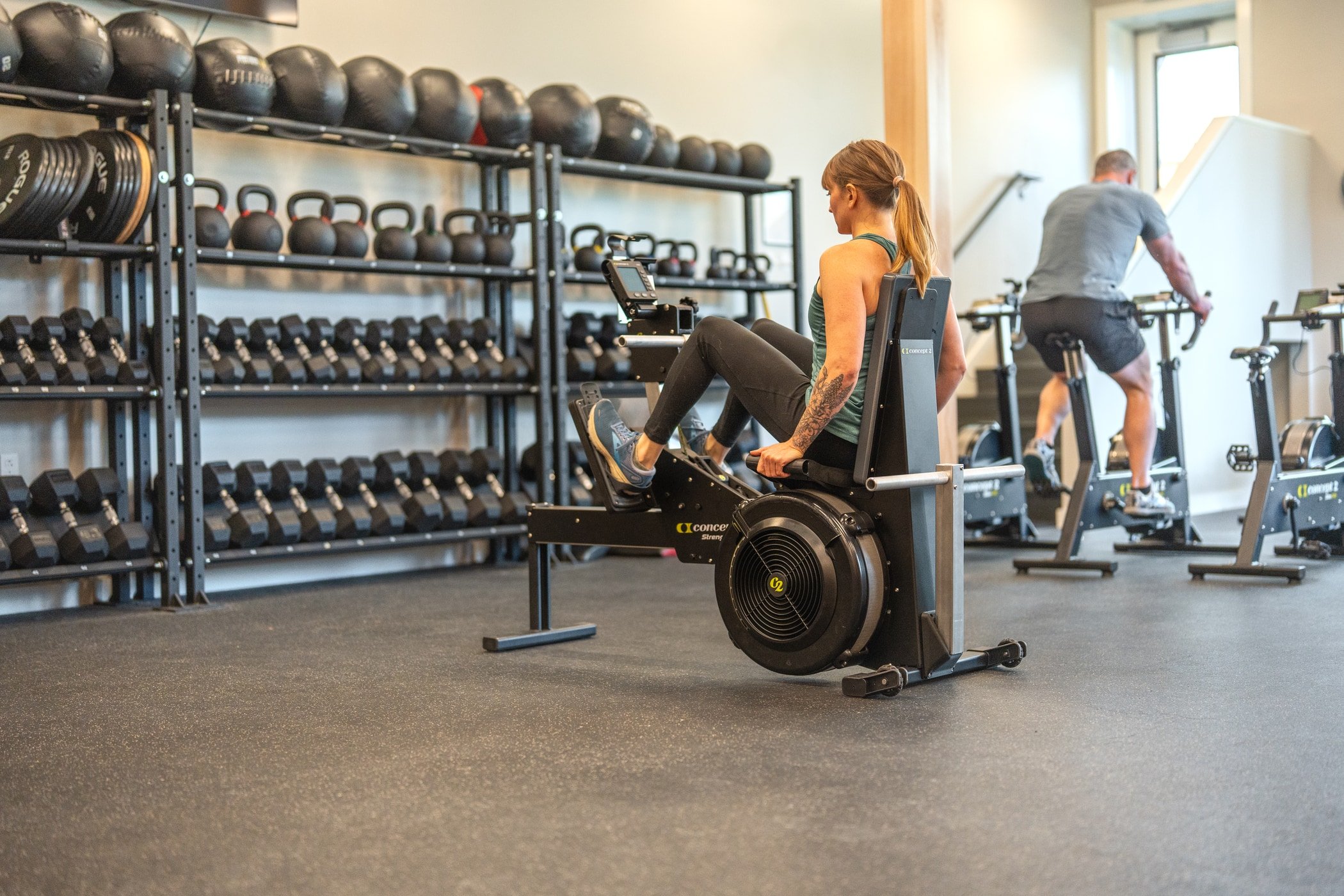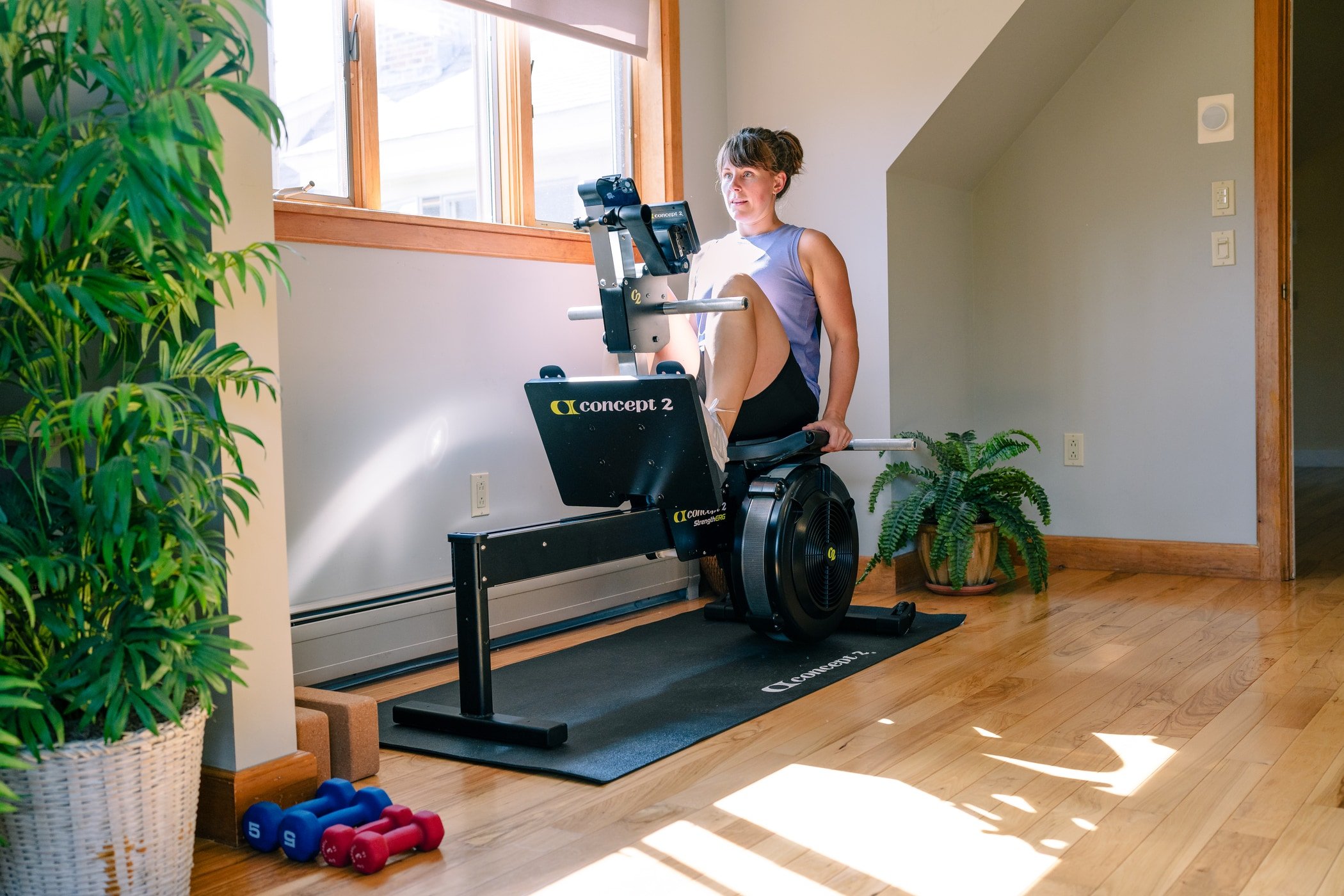Strength Training: Get Stronger & Healthier
Dec 17, 2024
Share

For many, strength training is a way to get stronger, to be able to keep doing the activities that they love, and to ward off the bad backs and creaky knees that can come with age. The data might surprise you, however, of the many other health benefits of strength training. While cardio has been king for years, recent data is clear on the many benefits of also incorporating strength training into your exercise regimen. From lowering your risk of heart disease, to boosting your metabolism, to helping you manage your mental health, the findings are impressive for strength training. It’s unanimous; for a stronger, longer, and healthier life, inside and out, we should all be strength training more.

Below you’ll find numerous reasons why strength and resistance training is important for everyone, no matter their age or athletic ability. These reasons were guiding principles of why we created the Concept2® StrengthErg™, and why we think strength and resistance training should be effective and approachable to everyone.
Improves Bone Health
While it’s a no brainer that strength training helps increase muscle mass, it also helps promote stronger bones. The stimulus of resistance training just two times a week has been seen to help maintain bone density and even been seen to increase bone density in some studies.1 With age, our bodies begin to lose both bone mineral content and density, which leads to increased risk of fractures and breaks. This increases substantially for women of postmenopausal age when compared to men. It is shown that those who incorporate strength training into their exercise routine are more likely to have stronger, healthier bones in the long run.2
Mental Health and Cognitive Function
You may have heard of “runner’s high” before, but did you know the same effect can be achieved with resistance training, too? When we exercise, the brain signals to release endorphins from our pituitary gland, which is our bodies “feel good” hormone. These endorphins can help maintain lower cortisol and stress levels. Strength training leaves us with a post-workout sweat, as well as helping us alleviate anxiety and depression.3 For many, exercise is also a great outlet and healthy grounding activity during tough times. There is even mounting evidence that strength training can lead to neuroplastic changes within the central nervous system and improve cognitive functioning—benefiting cognitive health decline seen from Parkinson’s and Alzheimer’s dementia.4
Improves Sleep
We have known that exercise improves sleep, but new research shows that the type of exercise you do could also impact your quality of sleep. Those who did strength training several times a week saw the most improvement in sleep—not only sleeping longer but also having less restless sleep.5 Individuals that suffer from anxiety and depression related disorders also saw improvements in insomnia related symptoms with strength training.3 If you are currently trying to get a more restful night sleep, consider adding in strength to your exercise routine.
Increases Muscle Retention and Decreases Fall Risk with Age
While strength training is often used to build muscle and become more toned for younger populations, incorporating strength training as we age is integral to maintaining muscle mass later in life to help prevent falls and associated hospitalizations. As we grow older, we naturally become weaker as our muscle mass decreases—our balance and stability also decline. Studies have found that seniors who engaged in strength training twice a week reduced their fall risk by nearly 40%.6 What is significant about these findings is that strength training was more effective at preventing falls compared to both balance exercises and aerobic exercises. Long term strength training also helps improve individuals' overall health with lower rates of hospitalizations, lower mortality rates, less age-related muscle loss, and lower rates of osteoporosis. ‘Use it or lose it’ rings truer as we get older and could even help you live longer.
Improves Athletic Performance
Strength training has long been incorporated into high school, collegiate, and professional sport training regimens. It helps decrease injury occurrence, increases muscular endurance, and improves speed and explosiveness. These improvements do not need to be left to just the professionals though—strength training has been found to help athletic skills for all ability levels. From football to pickleball, strength training helps all athletes. There is sufficient evidence for strength training programs to continue to be an integral part of athletic preparedness and improvement for all ability levels.7
Boosts Metabolism
You may have heard, “Muscle burns more calories than fat,” and this is a huge contributor to why strength training improves our metabolism. Metabolism is the process through which our bodies convert fuel (food and drink) into energy (thinking, breathing, walking). While metabolism can be affected by many factors, some lifestyle modifications, such as strength training and being more active, can boost our metabolisms. When we strengthen and increase our muscle mass, this in turn creates muscle tissue and boosts our body’s metabolic rate, because the body is working harder to maintain this tissue. And unlike fat, our muscles use energy (calories) even when at rest. This coupled with the post-workout calorie-burning effect known as excess post-exercise oxygen consumption (EPOC), boosts your metabolic rate much more with strength training. EPOC happens when the body needs more oxygen to restore its resting state, which results in greater calories burned post-workout. EPOC occurs after higher intensity workouts where the body becomes fatigued, so when you think of strength training, do not think of it as a 30-minute easy jog. This is why strength training not only keeps you strong, but also helps you stay leaner with a greater metabolic rate.
Improves Glycemic Control and Helps Lower A1C
For many type 1 and type 2 diabetic individuals a healthy balanced diet and exercise routine are a huge part of living long and healthy lives. New evidence suggests that strength training helps improve glycemic control and lowers the A1C for type 2 diabetes better than aerobic exercise alone. Those who strength trained and did strength training along with cardio, lowered their A1C greater than the group who did not strength train at all and only did cardio.8 This is due to the increased metabolic rate discussed previously. Though insulin resistance is not curable for those with diabetes, this shows the impact that strength training can have to live a healthier life with mindful lifestyle choices.
Lowers Risk of Heart Disease
While cardio and aerobic exercise has long been prescribed for a strong heart, there is mounting information that resistance training is just as important to maintain a healthy heart. Just this year, the American Heart Association updated their previous statement pertaining to strength training and now states, “Since 2007, accumulating evidence suggests resistance training is a safe and effective approach to improving cardiovascular health in adults with and without cardiovascular disease”. For a heart that keeps ticking, consider incorporating just two strength sessions a week into your current exercise regimen.
At Concept2, many of us workout to keep doing the activities we love, to keep up with our family members, or to simply carry the groceries in as few trips as possible. As our company and community have aged, we have seen the need for both cardio and strength training and noticed various barriers of entry into the strength training world. Whether it is not knowing where to begin, intimidation, or lack of confidence with balance or stability; strength training can be hard to start if you do not know where to begin.

When our engineering team set out to create the StrengthErg, they saw the need to try to remove some of those barriers. Our new compact strength machine makes it easy for strength training newbies to get a great workout in, without needing a spotter, personal trainer, or workout buddy. The StrengthErg is a great compliment to our other ergs and for some it may be their primary piece of strength training equipment, while for others it may be a part of their regimen. We are excited to offer the StrengthErg in early 2025 in the United States and Canada and in mid-2025 internationally.
Whatever form of strength training you choose, our hope is that it helps you lead a stronger, healthier, and longer life.
References:
- A Ram Hong, Sang Wan Kim. Effects of Resistance Exercise on Bone Health. Endocrinol Metab (Seoul). 2018 Nov 30;33(4):435–444.
- Orr R, Tsang T, Lam P, Comino E, Singh MF. Mobility Impairments in Older Adults with Hip Fracture: A Systematic Review. Journal of Aging and Physical Activity. 2021;29(2):279-285.
- Elizabeth Anderson, Geetha Shivakumar. Effects of Exercise and Physical Activity on Anxiety. Front Psychiatry. 013 Apr 23;4:27.
- Zi-Siong Chow, Ashleigh T. Moreland, Helen Macpherson and Wei-Peng Teo. The Central Mechanisms of Resistance Training and Its Effects on Cognitive Function. Sports Medicine. 2021 Dec;51(12):2483-2506.
- Angelique G Brellenthin and Duck-chul Lee. Comparative Effects of Aerobic, Resistance, and Combined Exercise on Sleep. The American Heart Association. 2022 April. Abstract 038: Comparative Effects Of Aerobic, Resistance, And Combined Exercise On Sleep | Circulation
- Catherine Sherrington PhD, Julie C. Whitney MSc, Stephen R. Lord DSc, Robert D. Herbert PhD, Robert G. Cumming PhD, Jacqueline C. T. Close MD. Effective Exercise for the Prevention of Falls : A Systematic Review and Meta-Analysis. Journal of the American Geriatrics Society. 2008 December. Effective Exercise for the Prevention of Falls: A Systematic Review and Meta‐Analysis - Sherrington - 2008 - Journal of the American Geriatrics Society - Wiley Online Library
- Michael R McGuigan, Glenn A Wright, Steven J Fleck. Strength training for athletes: does it really help sports performance? Int J Sports Physiol Perform. 2012 March. Strength training for athletes: does it really help sports performance? - PubMed
- Yukari Kobayashi, Jin Long, Shozen Dan, Neil M Johannsen, Ruth Talamoa, Sonia Raghuram, Sukyung Chung, Kyla Kent, Marina Basina, Cynthia Lamendola, Francois Haddad, Mary B Leonard, Timothy S Church, Latha Palaniappan. Strength training is more effective than aerobic exercise for improving glycaemic control and body composition in people with normal-weight type 2 diabetes: a randomised controlled trial. Diabetologia, 2023 July. Strength training is more effective than aerobic exercise for improving glycaemic control and body composition in people with normal-weight type 2 diabetes: a randomised controlled trial - PubMed
Recent Posts
Tags:
